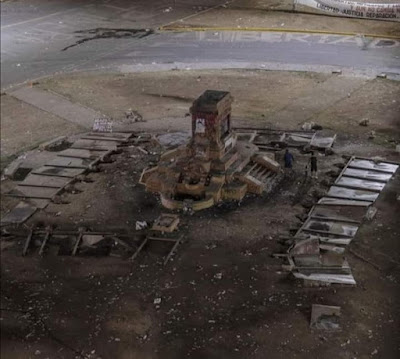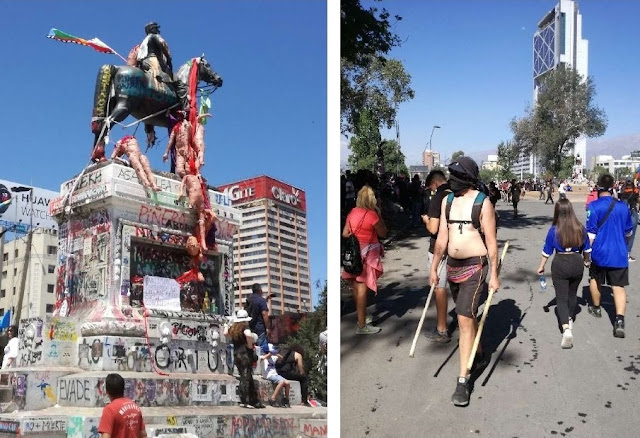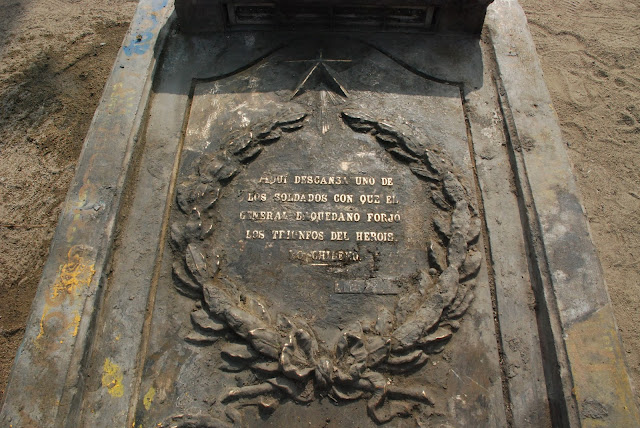The Chilean
urban insurrection began in Santiago de Chile with the attack on 20 metro
stations in 6 hours,18 October 2019. Suspended by COVID 19 in March 2020, this
performance is called a protest for social justice. Nearly one year later, the
6-hour siege of Capitol Hill in the USA is the public image of “surreal
insurrectional violence” and “the greatest threat to American (sic) Democracy”.
In Chile, the
epicentre of unprecedented violence and destruction is Plaza Baquedano,
Santiago de Chile. This hole in the ground, with an emptied plinth, and the
exhumed Tomb of the Unknown Soldier from Chile’s victorious Pacific War
(1879-1884), is at the centre of what is called Ground Zero. The first business
of the new Government is an Amnesty for crimes committed during the urban
insurrection, with a new Constitution being written as background, continuation, and result of the same.
In this
article, the author documents the unmaking of Plaza Baquedano, verified by
morning-after media, overlaid with Ernesto Laclau's determinate negation.
By words and
deeds, Plaza Baquedano is substituted by Plaza de la Dignidad, memorializing
the victory of violence over democratic dialogue through the art of protest and
the performative power of determinate negation.































Comments
Post a Comment